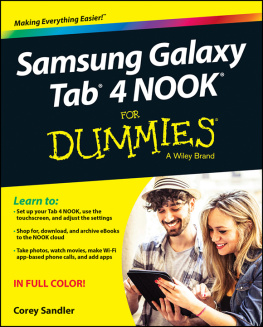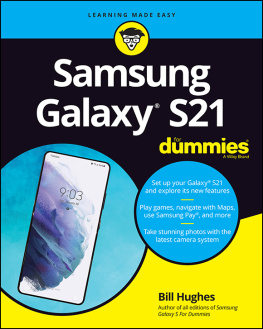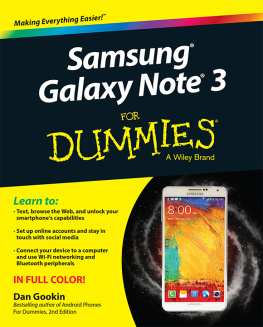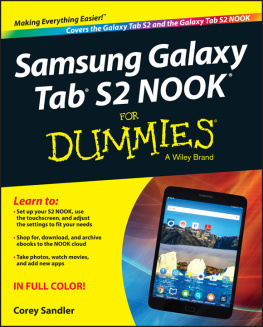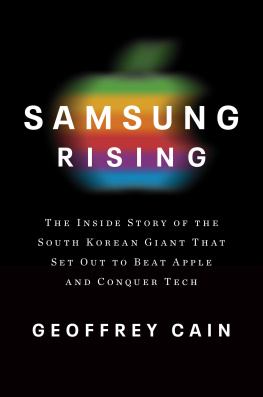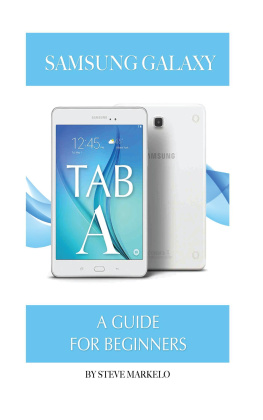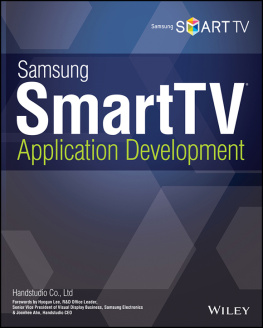Copyright 2014 by McGraw-Hill Education. All rights reserved. Except as permitted under the United States Copyright Act of 1976, no part of this publication may be reproduced or distributed in any form or by any means, or stored in a database or retrieval system, without the prior written permission of the publisher.
ISBN: 978-0-07-183580-0
MHID: 0-07-183580-6
The material in this eBook also appears in the print version of this title: ISBN: 978-0-07-183579-4, MHID: 0-07-183579-2.
eBook conversion by codeMantra
Version 1.0
All trademarks are trademarks of their respective owners. Rather than put a trademark symbol after every occurrence of a trademarked name, we use names in an editorial fashion only, and to the benefit of the trademark owner, with no intention of infringement of the trademark. Where such designations appear in this book, they have been printed with initial caps.
McGraw-Hill Education eBooks are available at special quantity discounts to use as premiums and sales promotions, or for use in corporate training programs. To contact a representative please visit the Contact Us page at www.mhprofessional.com.
TERMS OF USE
This is a copyrighted work and McGraw-Hill Education and its licensors reserve all rights in and to the work. Use of this work is subject to these terms. Except as permitted under the Copyright Act of 1976 and the right to store and retrieve one copy of the work, you may not decompile, disassemble, reverse engineer, reproduce, modify, create derivative works based upon, transmit, distribute, disseminate, sell, publish or sublicense the work or any part of it without McGraw-Hill Educations prior consent. You may use the work for your own noncommercial and personal use; any other use of the work is strictly prohibited. Your right to use the work may be terminated if you fail to comply with these terms.
THE WORK IS PROVIDED AS IS. McGRAW-HILL EDUCATION AND ITS LICENSORS MAKE NO GUARANTEES OR WARRANTIES AS TO THE ACCURACY, ADEQUACY OR COMPLETENESS OF OR RESULTS TO BE OBTAINED FROM USING THE WORK, INCLUDING ANY INFORMATION THAT CAN BE ACCESSED THROUGH THE WORK VIA HYPERLINK OR OTHERWISE, AND EXPRESSLY DISCLAIM ANY WARRANTY, EXPRESS OR IMPLIED, INCLUDING BUT NOT LIMITED TO IMPLIED WARRANTIES OF MERCHANTABILITY OR FITNESS FOR A PARTICULAR PURPOSE. McGraw-Hill Education and its licensors do not warrant or guarantee that the functions contained in the work will meet your requirements or that its operation will be uninterrupted or error free. Neither McGraw-Hill Education nor its licensors shall be liable to you or anyone else for any inaccuracy, error or omission, regardless of cause, in the work or for any damages resulting therefrom. McGraw-Hill Education has no responsibility for the content of any information accessed through the work. Under no circumstances shall McGraw-Hill Education and/or its licensors be liable for any indirect, incidental, special, punitive, consequential or similar damages that result from the use of or inability to use the work, even if any of them has been advised of the possibility of such damages. This limitation of liability shall apply to any claim or cause whatsoever whether such claim or cause arises in contract, tort or otherwise.
CONTENTS
PREFACE
In the early 1990s, Samsung Groups products were at the top of many industries in Korea, but they were in the second or third tier in global markets. By then, the effects of major changes at home and abroad were seriously affecting the conglomerate. Democratization in the 1980s had ignited a labor movement that had led to soaring wages and the end of Koreas run as a low-cost production base. Moreover, Japanese manufacturers, Samsungs main rivals, had moved offshore to avoid the sharp appreciation in the yen that followed the 1985 Plaza Agreement. When their leading technology and brands in electronics were combined with low labor costs in Southeast Asia and China, Samsungs struggles in global markets were clearly visible. Finally, forecasts that the electronics industry would shift from analog to digital technology in the twenty-first century were amplifying long-term concerns.
In response to these major changes resulting from democratization, globalization, and digitization, Samsung Chairman Lee Kun-Hee unveiled his New Management initiative in 1993. The strategic blueprint completely transformed Samsung, allowing it to overcome the threat of competition and pave the way for its taking advantage of new opportunities. It included the lofty goal of improving Samsungs products and services to the point of excellence and making Samsung one of the leading global companies of the twenty-first century. In the days of analog, Samsung had lagged behind Japanese electronics companies, but Chairman Lee dreamed of Samsungs outdoing them in the digital age through aggressive, preemptive investments. The effort to achieve these audacious goals was summed up in Chairman Lees directive to his senior executives: Change everything except your wife and children.
Now, 20 years later, Samsung is one of the worlds leading companies, holding the number one spot in key electronics businesses like mobile phones, televisions, memory chips, display panels, and rechargeable batteries. All elements of the companys operations, including corporate strategy, management systems, and core competencies, were realigned in accordance with the goals of the New Management initiative. As a result, Samsung now occupies the leading position in the global electronics industry. The companys transformation over the past 20 years and its rise to the forefront of the global corporate stage has set a compelling precedent for both Korean and foreign companies.
While a number of books have been written about Samsungs rise to the top and Chairman Lee Kun-Hees role in its transformation, most of these books were written for the entertainment of the general public. Professional analysis and applications of theory from a management scholars perspective on Samsungs strategy and its main strengths have been lacking. Moreover, several scholarly books on the subject lack in-depth, systematic analysis. Data about Samsung have also been difficult to acquire, and access to interviews has been challenging; thus, newspaper articles and publicly available data have often been the only materials available to management scholars. As a result, both foreign and Korean managers who wish to understand and benchmark Samsungs management system for their own companies have been unable to find information to aid them in their endeavors.
Under these circumstances, we have had the good fortune to be asked by the Samsung Economic Research Institute (SERI), a think tank of the Samsung Group, to conduct in-depth research into the sources of Samsungs competitiveness and to learn about its future plans. With SERIs cooperation, since 2004, we have interviewed more than 80 of Samsungs key executives, including CEOs, with most of them coming from Samsung Electronics. SERI also provided data about Samsung for examination and analysis. From 2008 to 2011, while serving as Samsungs academic advisors, we obtained a wide variety of information about the company. In 2011, as a result of this research, we published an article in the Harvard Business Review (HBR), in collaboration with Professor Tarun Khanna at Harvard Business School, on the factors influencing Samsungs success. This was the first case analysis of a Korean company to be published in HBR. Overall, during the past 10 years, beginning in 2004, in the process of conducting research and analysis, we have broadened our understanding of Samsung as a company, serving as academic advisors, educating executives, and writing research papers and case studies.


